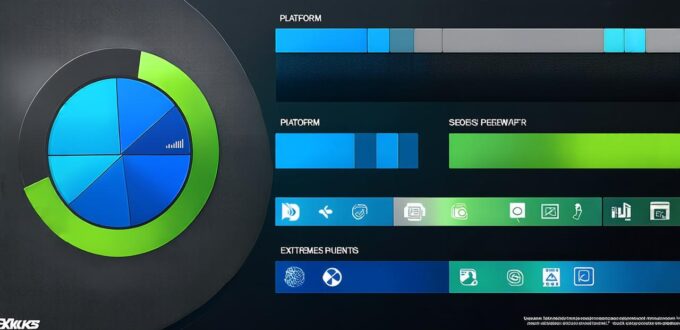In today’s fast-paced digital world, software platforms have become an integral part of our daily lives. But what exactly are these platforms, and how do they differ from traditional software applications? In this article, we will explore the differences between a platform and software, including their features, use cases, and benefits.
What is Software?
Software refers to a set of instructions that tell a computer to perform specific tasks. It can be anything from a simple program that calculates numbers to complex applications like Photoshop or Microsoft Office. Software is typically created using programming languages such as Java, Python, or C++ and is designed to run on specific operating systems.
What is Platform?
Platforms, on the other hand, are a type of software that provides a framework for developers to build their own applications. A platform can be thought of as a virtual environment where developers can write code, test it, and deploy it without having to worry about the underlying infrastructure. Examples of platforms include Amazon Web Services (AWS), Microsoft Azure, and Google Cloud Platform.
Features of Software vs Platform
One key difference between software and platforms is their functionality. Software is typically designed to perform a specific task or set of tasks, while platforms are more general-purpose tools that provide developers with the ability to create custom applications. In other words, software is end-user-oriented, while platforms are developer-oriented.

Use Cases for Software vs Platform
Software is typically used by end-users to perform specific tasks such as writing emails, creating presentations or designing websites. It can be a standalone application that runs on a user’s computer or a web-based application that runs in a web browser.
Platforms, on the other hand, are typically used by developers to build custom applications for their clients or end-users. Platforms provide developers with a set of tools and resources that they can use to create complex applications quickly and efficiently. Platforms can also be used by organizations to host their own applications and services, providing them with greater control over their infrastructure.
Benefits of Software vs Platform
One key benefit of software is its ability to perform specific tasks very well. Software can be optimized for a particular task or set of tasks, resulting in fast and efficient performance. Software is also typically easy to use, with a simple interface that allows users to perform their desired actions quickly and easily.
Platforms, on the other hand, provide developers with greater flexibility and scalability. Platforms can be used to build applications for multiple platforms, including mobile devices, web browsers, and desktop computers. Platforms also provide developers with access to a wide range of tools and services that can help them build more complex and sophisticated applications quickly and efficiently.
Real-life Examples of Software vs Platform
Let’s take a look at some real-life examples of software and platforms to better understand their differences.
Microsoft Office is an example of software that is designed to perform specific tasks such as writing emails, creating presentations or designing websites. Microsoft Office is optimized for the Windows operating system and can be installed on any computer running Windows.
Amazon Web Services (AWS) is an example of a platform that provides developers with a set of tools and resources to build custom applications. AWS allows developers to create applications that can run on multiple platforms, including mobile devices, web browsers, and desktop computers. AWS also provides developers with access to a wide range of tools and services that can help them build more complex and sophisticated applications quickly and efficiently.
FAQs
What is the difference between software and platform?
Software refers to a set of instructions that tell a computer to perform specific tasks, while platforms provide a framework for developers to build their own applications.
What are some examples of software and platforms?
Some examples of software include Microsoft Office, Photoshop, and QuickBooks. Some examples of platforms include Amazon Web Services (AWS), Microsoft Azure, and Google Cloud Platform.
What are the main differences between software and platforms?
The main differences between software and platforms include their functionality, level of abstraction, use cases, and benefits.
Summary
In conclusion, understanding the differences between software and platforms is crucial for software developers to choose the right tool for the job. Software is designed to perform specific tasks, while platforms provide a framework for developers to build custom applications. The choice between software and platforms ultimately depends on the specific needs of the user or organization, but by understanding their differences, developers can make more informed decisions when choosing the right tools for their projects.
